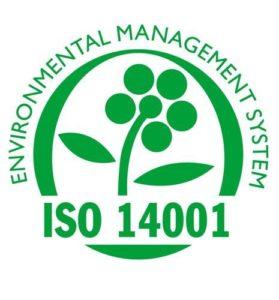ISO 14001:2015, which sets requirements for an environmental management system, is one of the most widely used standards in the world and a key business tool for many organizations. This standard occupies an important place in the management system of many organizations around the world that attach great importance to their environmental impact.
ISO 14001:2015 responds to recent trends, such as the growing recognition by companies of the need to consider both external and internal stakeholder requirements that affect them, including climate variability.
Looking ahead, the latest version of the standard will help promote greater integration between environmental concerns and an organization’s strategic planning and thinking.
ISO 14001 is something that organizations can use to differentiate themselves from their competitors, and in many cases also provides a financial advantage by helping organizations improve efficiency and productivity.
Benefits of ISO 14001 certification?
1. Improving image and authority.
If contracts or tenders require ISO 14001 certification, this is a clear advantage. But even if this is not a formal requirement, very often your clients and stakeholders will be interested in how you care for the environment. One way to reassure everyone that you are committed to managing your environmental impacts is to have a visible environmental management system to identify and control those impacts.
2. Assistance in complying with legal requirements.
One of the most important benefits that can be achieved by implementing ISO 14001 is providing you with a framework for identifying, monitoring, and complying with the various environmental requirements that apply to your processes. Of course, you try to comply with all applicable laws before implementing an environmental management system, but the system itself can help ensure your compliance. In addition, implementation will let people know that you have a proven structure for defining and complying with various legal, regulatory, and contractual requirements, thereby enhancing your image and credibility.
3. Improved cost control.
All companies want to cut costs – it’s a fact of life in today’s global economy, but you may be wondering how an environmental management system can help with cost control. The first way this can happen is by using your system to identify, control, and reduce the number of environmental incidents that could cost your company in fines, cleanups, and reparations. Secondly, you can use the aspect of improving your environmental management system to help reduce costs by working to conserve energy and materials needed for your company’s processes.
4. Higher success rate when implementing change.
When you make improvements, it is important to ensure that you are working with good and accurate data, which is a key element of the ISO 14001 standard. By implementing improvement activities, you can significantly increase the chances of success by tracking improvement through data collection – and even if… If something goes wrong, you will detect it in time and correct it. This will help save time and money.
5. Enable faster process improvement.
The element of continuous improvement is an integral part of the requirements of ISO 14001, which helps your organization move from small to larger improvements across all organizational processes. Through these systematic processes, you can not only improve your company’s image but also reduce costs, help your employees find new and more effective ways to reduce their environmental impact, and save time and resources when improving processes.
6. Reduce staff turnover.
Employees who are dedicated to improving the company are more involved in other aspects of the company. Given the choice between working for a company that shows care and concern for the environment and one that does not, most people would prefer the former. Involving employees in group efforts to reduce a company’s environmental footprint often leads to increased employee focus and retention; it is easier and less expensive to retain employees than to recruit and train new ones. So, every dollar spent helping employees become more engaged is worth more savings for the training and recruiting department.
Of course, the main reason for implementing an environmental management system using ISO 14001 requirements is to help the environment by reducing environmental impact. Although this remains the main reason for implementing an environmental management system, some companies still find it difficult to reduce the cash costs required to make changes. It may be easier to justify the cost of making these improvements by focusing on other benefits
Scope of ISO 14001 standard
The standard applies to any organization, regardless of its size, type, or nature, and applies to the environmental aspects of its activities, products, and services that the organization believes can be controlled or affected from a life cycle perspective. ISO 14001 certification does not set specific criteria for environmental performance.
This International Standard can be used in whole or in part to systematically improve environmental management.
The scope of the environmental management system should include everything that is under the organization’s control or influence that could affect its environmental performance. Confidence in an organization’s environmental management system will largely depend on the extent of the boundaries established. Under no circumstances should the scope be used to exclude activities, products, or services that could or could potentially affect the organization’s environmental performance or evade its compliance requirements.
An inappropriately narrow or excluded scope can undermine stakeholder confidence in the organization’s environmental management system and reduce its ability to achieve the intended results of the environmental management system.
Recommended article: Vision Care Market Size, Share, Growth 2024-2032




